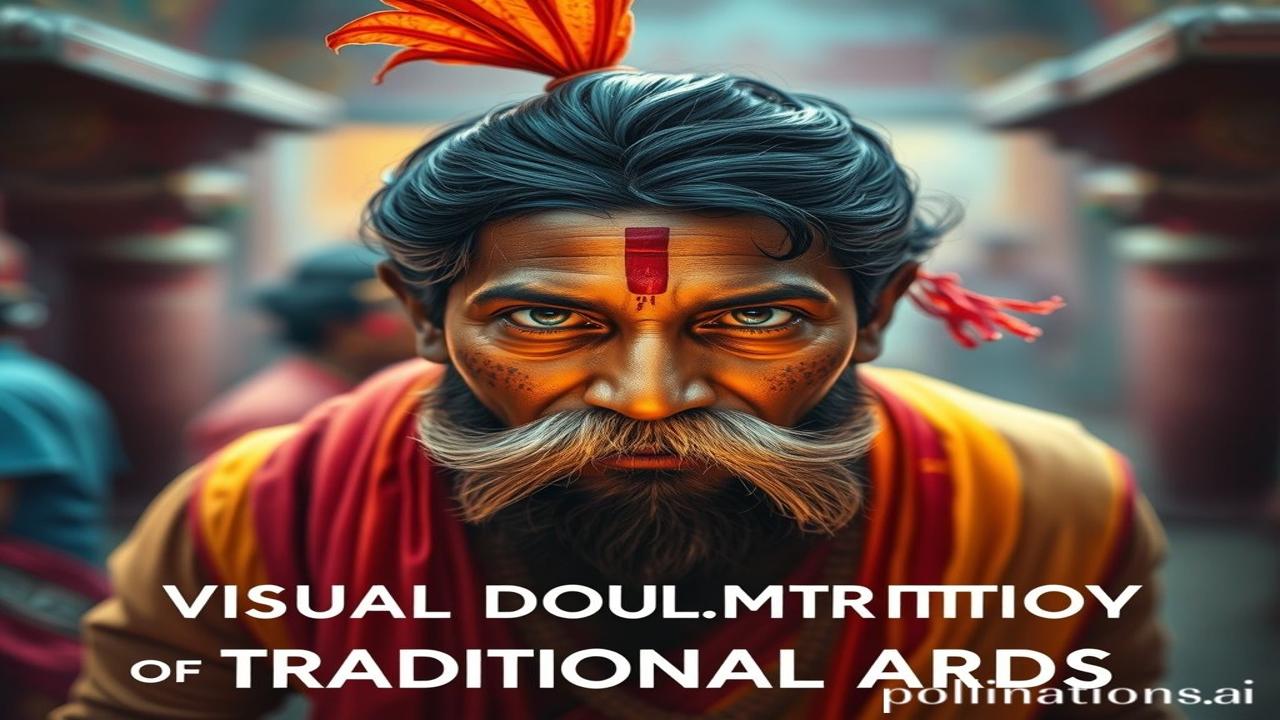Waqt Ki Dhool Se Nikalti Tasveerein: Visual Documentation of Traditional Arts
Kabhi socha hai, woh dhun jo shehnai se nikalti hai, woh rang jo madhubani ki deewaron pe chadhta hai, woh taal jo ghungroo banate hain…agar yeh sab bas hawa mein ghul jaye toh kya hoga? Waqt ki dhool mein kuch kahaniyan chhup jaati hain, par kuch kahaniyan tasveeron mein amar ho jaati hain. Today, let’s delve into the vital role visual documentation plays in preserving India’s rich tapestry of traditional arts.
Parampara Ko Capture Karna: Why Visuals Matter
Visual documentation, in essence, is the act of recording traditional arts through photography, video, and other visual mediums. It’s not just about taking a pretty picture; it’s about capturing the essence, the process, the people, and the stories behind these arts. Think of it as building a bridge from the past to the future, a bridge made of images and videos.
This isn’t a new phenomenon. Even centuries ago, artists and historians used illustrations and sketches to document the arts of their time. However, the advent of photography and film in the 19th and 20th centuries revolutionized this field. Imagine, being able to witness a Kathak dancer’s intricate footwork or the delicate brushstrokes of a miniature painter, not just through written accounts, but through moving images!
Why is it important? Kyunki ye arts hamari dharohar hain, hamari pehchan. They are the living embodiment of our history, philosophy, and cultural identity. Visual documentation helps us:
- Preserve: Protects these vanishing arts from oblivion.
- Educate: Makes these arts accessible to future generations.
- Promote: Showcases the beauty and diversity of Indian art globally.
- Empower: Gives voice and recognition to the artisans who create these masterpieces.
Zameeni Sach: Artisans, Dreams, and Dust
Picture this: A small village in Rajasthan, the scorching sun beating down on the ochre-colored houses. Inside a dimly lit room, an elderly woman, her hands gnarled with age, meticulously paints a phad – a traditional cloth painting that tells the story of local deities. Her wrinkled face reflects years of dedication, of sleepless nights spent perfecting her craft.
“Beta, yeh kala toh hamare khoon mein hai,” she tells a young photographer who’s documenting her work. “Mere dada-pardada bhi yahi karte the. Dar hai ki kahin yeh dharohar humare saath hi na chali jaaye.”
Or consider this: In the bustling lanes of Varanasi, a young weaver hunches over his loom, his fingers flying across the threads, weaving a Banarasi silk saree. The rhythmic clack of the loom fills the air, a sound that has echoed through these streets for centuries. He dreams of taking his family business to new heights, of showcasing his artistry to the world. But he worries about the competition from machine-made textiles, the lack of recognition for his hard work.
These are the faces, the stories, that visual documentation seeks to capture. It’s about bringing these artisans, their struggles, and their triumphs to light.
Dharohar Aur Pehchan: Echoes of the Past in Today’s India
Today, you see glimpses of these traditional arts everywhere, from the intricate designs on a Diwali diya to the vibrant colours of a Holi rangoli. Think of Bollywood movies that celebrate the folk dances of different regions or the fashion designers who incorporate traditional embroidery techniques into their creations.
Visual documentation plays a key role in ensuring that these traditions continue to thrive. Digital archives, online exhibitions, and documentaries make these arts accessible to a global audience. They inspire young artists, scholars, and entrepreneurs to engage with their cultural heritage.
“Bharatiyata” is not just about the past; it’s about how we carry that past into the future. Visual documentation helps us do just that, by making sure that the stories of our ancestors are not lost to time.
Mazedar Tathya Ya Bhram-Bhanjak: Unveiling the Myths
Myth: Traditional art is dying.
Reality: While many traditional arts are facing challenges, they are not dying. In fact, there is a renewed interest in these arts, both in India and abroad. Visual documentation is playing a vital role in this revival by showcasing the beauty and relevance of these traditions.
Fun Fact: The earliest known examples of visual documentation of Indian arts date back to the Mughal period, with detailed illustrations of courtly life and artistic practices in manuscripts like the Akbarnama.
Drishya Aur Bhavnayein: A Sensory Journey
Imagine standing in a dimly lit temple, the air thick with the fragrance of incense and sandalwood. The sound of chanting fills your ears, as a group of dancers perform a Bharatanatyam recital. The rhythmic beat of the drums, the graceful movements of the dancers, the vibrant colours of their costumes… It’s a sensory overload, a glimpse into the heart of Indian culture.
Or picture yourself walking through a rural village, where every wall is painted with intricate folk art. The sun beats down on your face, the dust swirls around your feet, and the sound of children’s laughter fills the air. It’s a scene that is both timeless and uniquely Indian.
Visual documentation allows us to experience these moments, even if we can’t be there in person. It captures the sights, sounds, and smells of a culture, making it come alive for viewers around the world.
Antim Vichar Ya Uddharan: A Reflection
As we strive to preserve our rich artistic heritage, let us remember the words of Rabindranath Tagore: “Art is the expression of man’s delight in labour.” Visual documentation is not just about preserving art; it’s about celebrating the skill, dedication, and passion of the artists who create it.
“Yatra Vishwam Bhavatyekaneedam” – Where the whole world becomes one nest. May visual documentation help us create a world where the beauty and wisdom of all cultures are celebrated and cherished.
